These unusual monuments, which have been preserved until today, have been decorating the country for several thousand years. All of them have an important historical, cultural and spiritual role.
Stonehenge, England
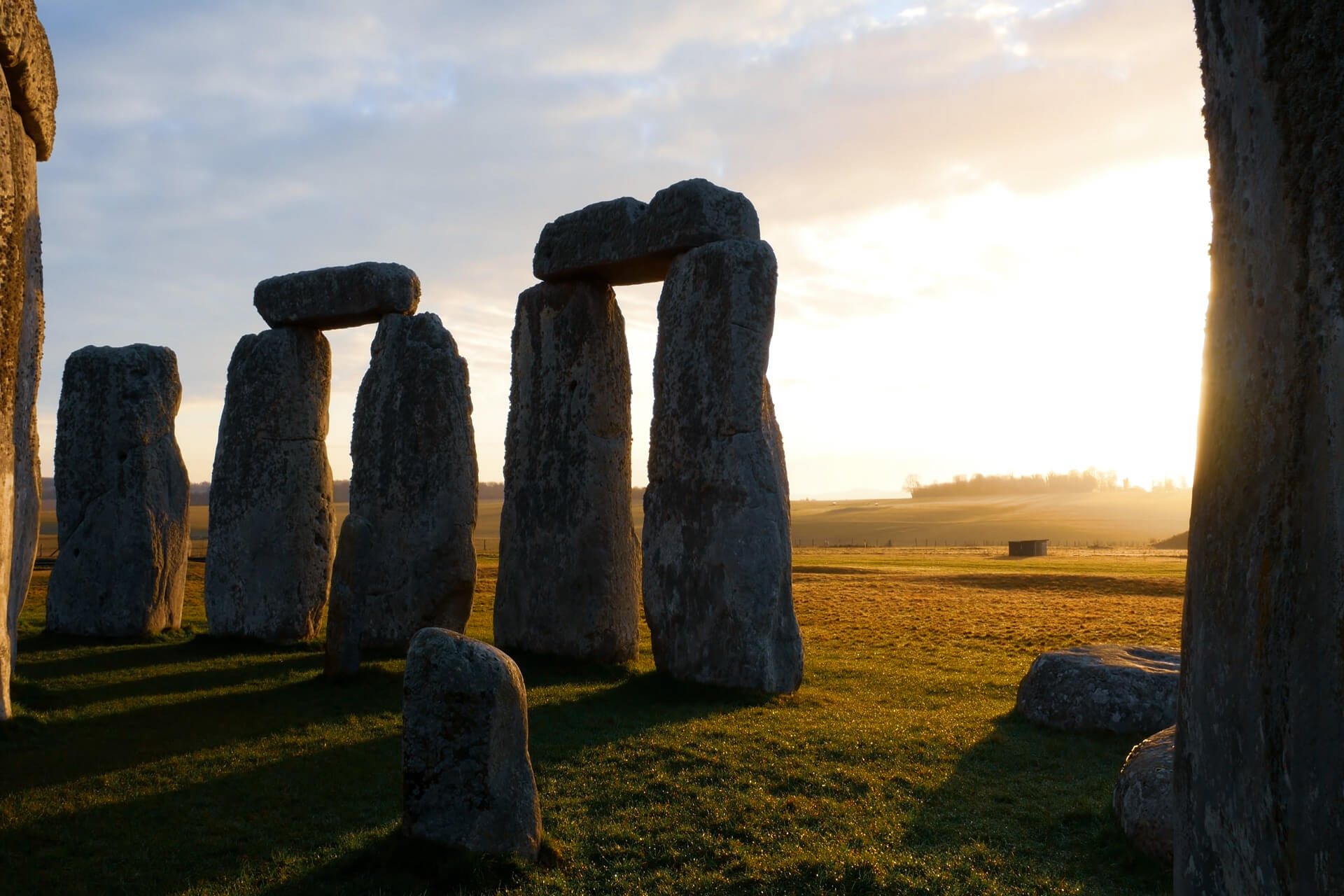
Stonehenge, England is located deep in the English countryside, tucked on the enormous Salisbury Plain, and is one of the world’s most recognizable and enigmatic structures. This prehistoric wonder has captivated the imaginations of many centuries and continues to fascinate archaeologists, historians, and visitors alike.
Stonehenge is a megalithic stone circle that dates from the late Neolithic period, around 2500 BCE. Its creation is an incredible feat of engineering and an unrivaled exhibition of old craftsmanship. The monument is made up of gigantic upright stones called as sarsens that weigh roughly 25 tons apiece and are capped with equally massive lintels, forming the iconic trilithons that have become synonymous with Stonehenge.
Theories concerning Stonehenge’s purpose range from astronomical observatory to sacred ritual place. The exact reason for its erection, however, remains a mystery.
The arrangement of Stonehenge is extremely sophisticated, with astronomical alignments that appear to have borne major cultural and religious significance for its ancient architects. The rising sun exactly aligns with the Heel Stone and the center axis of the monument at the summer solstice, throwing a brilliant ray of light through the edifice.
The sheer size and weight of the stones employed in its construction astound, especially given the dearth of modern machinery at the time. Transporting, lifting, and positioning these gigantic blocks would have necessitated a well-coordinated effort by a large workforce, demonstrating the ancient community’s extraordinary organizational abilities.
Stonehenge appears to have been an evolving monument, with construction and renovation taking place over several centuries, according to archaeological data. The original design was most likely a circular earthwork enclosure, the traces of which can still be seen today. Following generations added the massive sarsen stones, resulting in the breathtaking picture we see today.
Imagine an ancient people toiling away, possibly directed by the stars and motivated by awe for the cosmic grandeur above.
Stonehenge grew throughout the years from a modest earthen mound to a complex stone circle, becoming a tribute to our forefathers’ enduring dedication and inventiveness.
When you visit Stonehenge today, you can’t help but be struck by its intimidating presence. You can almost feel the weight of history weighing down on you as you go around the outer circle. The sight of these gigantic stones, seemingly carelessly but with such precision, inspires amazement and surprise at the skills of our ancient forefathers.
The wind whispers through the stones, carrying with it memories of a time long past, a link to the mysteries of our distant ancestors.
Stonehenge is a UNESCO World Heritage Site, attracting tourists from all over the world to wonder at its antiquity and ponder its mysteries. Despite decades of investigation and debate, the exact purpose and importance of this amazing monument remain a mystery that inspires awe and intrigue.
Stonehenge in England is a timeless tribute to our forefathers’ brilliance, spirituality, and reverence. Its huge stones and astrological alignments provide a tantalizing look into prehistoric cultures’ beliefs and rituals, reminding us of humanity’s shared fascination with the universe. This awe-inspiring structure, with its vast history and unanswered riddles, will definitely continue to captivate future generations, cementing its status as one of the world’s oldest and most amazing monuments.
Sigiriya, Sri Lanka
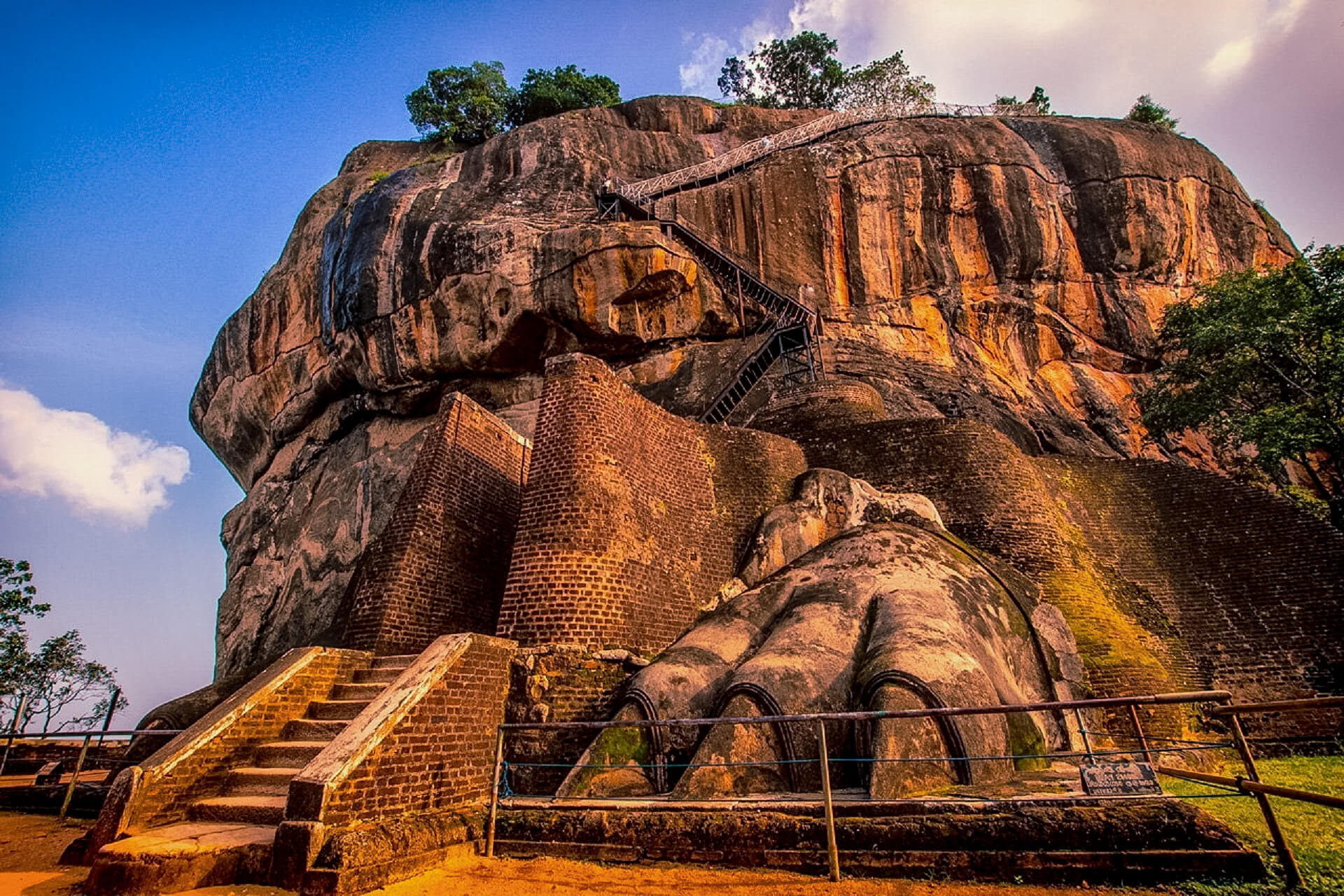
When it comes to the world’s most fascinating historical landmarks, Sigiriya in Sri Lanka is right up there. This old rock fortification, which dates back to the fifth century, is a wonderful example of human inventiveness and architectural skill.
Sigiriya is a UNESCO World Heritage site whose name translates to “Lion Rock” in Sinhalese. It is majestically perched on a massive 200-meter-high granite column, surrounded by lush greenery and stunning scenery. For ages, archaeologists, historians, and curious tourists have been intrigued by this awe-inspiring place, making it a must-visit destination for those seeking to immerse themselves in the mysteries of the past.
Ascending Sigiriya’s peak is an experience in and of itself. The adventure begins with a trail that takes you through beautifully planted gardens and water gardens. The old hydraulic engineering marvels, such as the spectacular water retention systems and fountains that once decorated this historical treasure, await you here.
The road then leads to the famous Lion Gate, a gigantic brick building shaped like a lion’s paw. Unfortunately, the upper section of the lion, which was initially built to look like a complete lion’s body, has corroded with time, leaving behind the intriguing paw-shaped entrance.
Visitors continue their journey and are met by a stunning set of frescoes. These ancient paintings portray beautiful women thought to be celestial nymphs and are found in a secluded niche of the rock. Their vivid colors and intricate workmanship provide a rare look into the ancient civilisation that once lived here.
Travelers who reach the summit of Sigiriya are rewarded with stunning panoramic views that spread as far as the eye can see. On a clear day, one may look out over the surrounding landscape and imagine the strategic advantage that this stronghold once afforded to its occupants.
The Sigiriya Rock Fortress exposes its intriguing layout at the peak, created with precision and foresight. The designers of this masterpiece created a sophisticated network of gardens, ponds, and paths that once sustained a bustling community. These ruins not only demonstrate the excellent urban planning of the time, but also provide insights into the ancient inhabitants’ lifestyle and culture.
Despite its undoubted historical importance, the exact purpose of Sigiriya is still a matter of academic contention. According to some researchers, it was a royal home for King Kasyapa, who took sanctuary atop this powerful rock to escape his enemies. Others believe that when the king died, Sigiriya may have served as a Buddhist monastery.
Another curious element of Sigiriya is the Mirror Wall, which adds to the mystery. This highly polished, mirrored wall includes writings from ancient travelers and pilgrims who visited the location. These poetry verses laud the frescoes’ brilliance and offer a unique insight into the views and feelings of those who loved this cultural masterpiece.
Sigiriya has recently undergone considerable preservation measures to save its priceless historical assets. Conservationists and archaeologists work tirelessly to preserve the site’s integrity, ensuring that future generations can enjoy the majesty and majesty of this historic rock castle.
Sigiriya, Sri Lanka, is a lasting testament of human ingenuity and determination. Its beautiful frescoes and breathtaking panoramas transport tourists back in antiquity, letting them to interact with the great civilisation that once flourished here. Exploring this iconic UNESCO World Heritage site will definitely leave you with a profound sense of wonder and respect for the rich fabric of human history, whether you are a history enthusiast, a nature lover, or an adventurous person.
Caves in Mexico
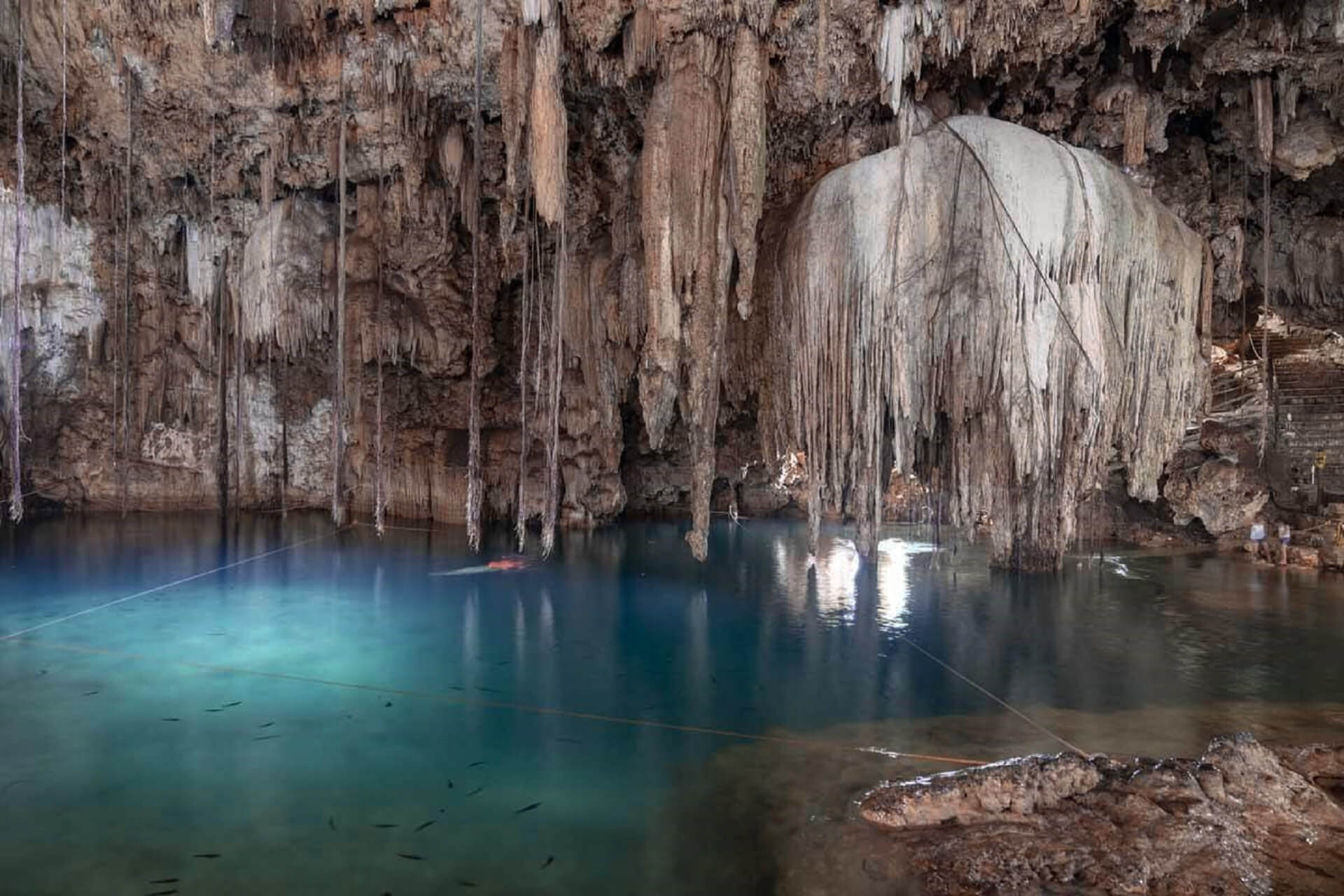
Two magnificent treasures have weathered the test of time in the heart of Mexico, hidden inside the cryptic landscape: the Caves of Chichen Itza and Valladolid, Mexico. These ancient subterranean wonders provide an enthralling peek into the history and culture of the Mesoamerican civilizations that once flourished in this region.
Chichen Itza, a world-renowned archaeological site, is famed for its enormous pyramids and stately temples, yet enigmatic tunnels lurk beneath the surface, adding another layer of interest to this ancient wonder. The Mayans are thought to have used these caverns as sacred locations, providing a sanctuary for religious events and rituals. Archaeologists have discovered artifacts, ceramics, and sacrificial remains in these subterranean rooms, providing vital insights into this ancient civilization’s spiritual traditions.
One such grotto, known as the Cave of Balankanché, is important in Mayan mythology. The name translates to “the throne, or sacred place of the jaguar,” referring to the Mayan deity of fertility and agriculture. As you enter the dimly lighted cave, you will be met with breathtaking stalactites and stalagmites formed by thousands of years of water pouring from the cave roof. Priests are reported to have formerly performed sacred ceremonies in these hallowed halls, imploring the gods for abundant crops and divine protection.
Another enchanting subterranean realm awaits exploration in the lovely town of Valladolid, just a stone’s throw away from Chichen Itza. The Cenote Zaci is a monument to the geological wonders fashioned by nature over millions of years. This cenote, unlike regular caves, is an exposed sinkhole with steep walls plummeting into the depths below. It is a natural wonder that not only relieved the Mayans’ thirst but also held enormous cultural significance.
Cenote Zaci was treasured as a sacred spot because it was thought to be the home of Chaac, the Mayan god of rain. The crystal-clear waters glitter in the sunlight, tempting guests to cool down in the holy pool. The calm atmosphere of this cave-cenote complex invites visitors to linger and ponder on the rich history that has unfolded in its gloomy recesses.
As we explore deeper into the significance of these caves in Mexico, a reoccurring theme emerges: the caves’ significant relationship to Mayan spiritual beliefs. These natural formations were seen as portals to the underworld, through which the living may converse with their ancestors and deities. The echoes of prayers, chants, and rites must have resonated through the labyrinthine corridors, cementing the people’s link with their gods.
The rich paintings and symbols engraved on cave walls add to the cultural value of these caverns. Hieroglyphs and pictographs tell stories of conquests, astronomical happenings, and the Mayan pantheon of gods. These cave inscriptions act as a time capsule, preserving the stories and knowledge of a long-gone society.
The Caves of Chichen Itza and Valladolid, Mexico, are more than just geological formations; they are living monuments that remind us of our common human heritage. We connect with the past and get a profound understanding for the ancient civilizations that once thrived here as we explore the depths of these subterranean worlds. The mysterious beauty of these caverns, embellished with stalactites, stalagmites, and religious relics, invites us to ponder the mysteries of the past and the core of our existence.
Pyramids, Egypt
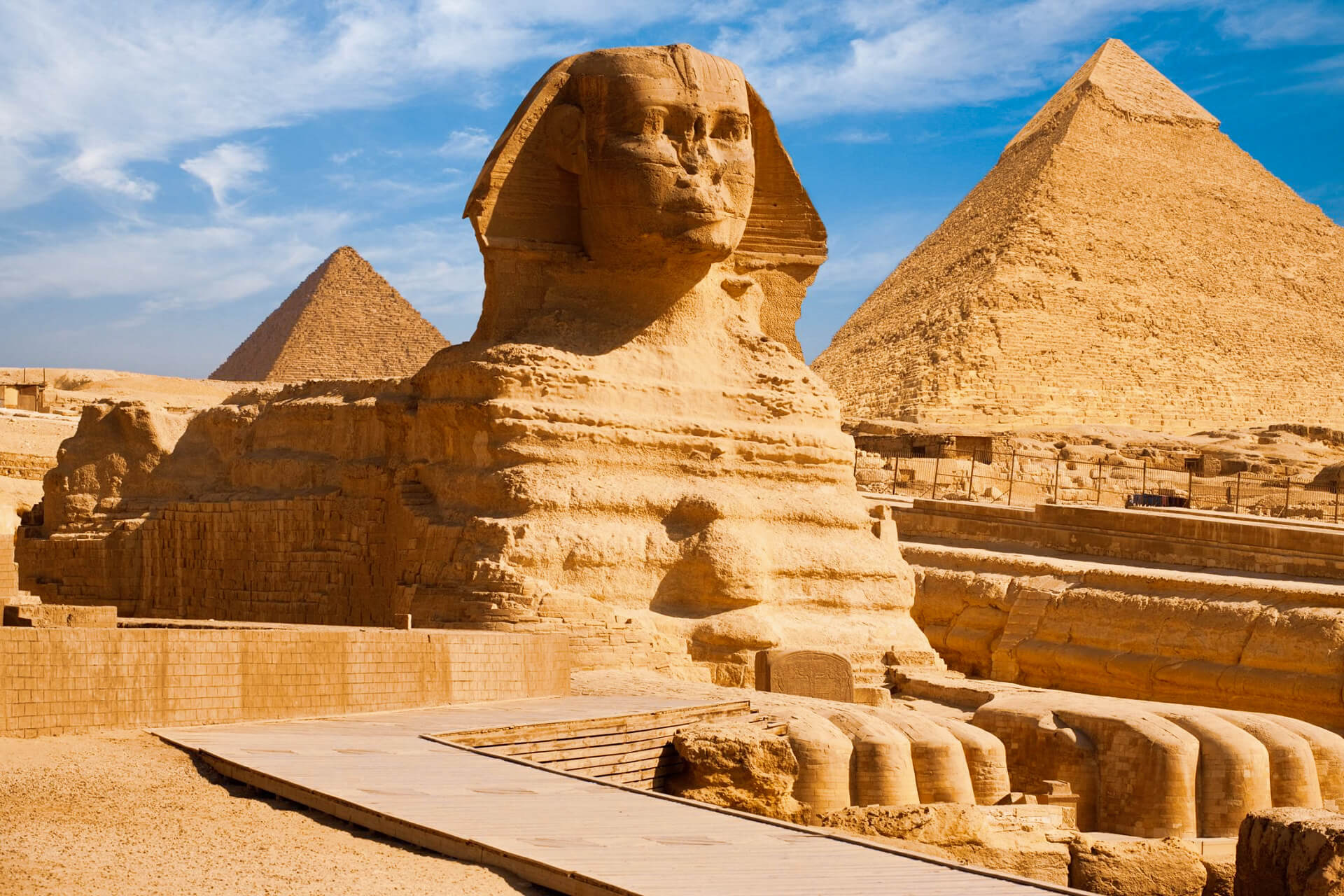
Egypt’s pyramids are magnificent, towering buildings that have studded the landscape of the Nile River basin for hundreds of years. These magnificent landmarks have become synonymous with the country, attracting a plethora of curious minds from all over the world.
The Pyramids are massive architectural achievements that functioned as tombs for ancient Egypt’s pharaohs, facilitating their trip into the afterlife. The Great Pyramid of Giza, the most famous of these pyramids, is a truly breathtaking sight.
With its perfect construction and extraordinary preservation, the Great Pyramid of Giza stands tall and defiant, defying the passage of time. It’s no surprise that it was named one of the Seven Wonders of the Ancient World. Built approximately 2560 BCE during the time of Pharaoh Khufu, this imposing pyramid was the tallest man-made edifice for over 3,800 years.
The construction of these massive structures required meticulous design, excellent mathematics, and an enormous quantity of labour. The ancient Egyptians’ engineering prowess was simply astounding.
Pyramids were often built from limestone blocks, granite, and mortar, which were often quarried locally. The accuracy with which these gigantic blocks were carved and positioned demonstrates the ancient Egyptians’ mathematical expertise and attention to detail. This painstaking craftsmanship assured the pyramids’ resilience and longevity.
The pyramids were also religious and astronomical landmarks. The ancient Egyptians’ great awareness of the cosmos was proven by their geometric designs and alignment with celestial bodies.
Each pyramid was built for a specific purpose and held important religious significance. The architecture and orientation of these monuments corresponded to numerous astronomical phenomena, like as solstices and equinoxes, emphasizing the ancient Egyptians’ relationship with the heavens.
The Pyramid of Khafre, Giza’s second-largest pyramid, is an excellent illustration of this astronomical alignment. Its entrance is perfectly aligned with the constellation Orion, which was important in Egyptian mythology.
The Pyramids are part of a huge funerary complex that includes temples, causeways, and lesser pyramids.
These auxiliary constructions were created to aid the pharaoh’s journey to the afterlife and to ensure a seamless transfer to the realm of the gods. The mortuary temples, Egypt especially, were important for completing rites and paying tribute to the deceased pharaoh.
While the Pyramids have withstood the test of time, they have not been immune to human intervention or natural elements.
The pyramids have been subjected to robbery, weathering, and restoration attempts over the ages, all of which have affected their original appearance. Despite these problems, the essence of their magnificence survives, inspiring wonder and admiration.
Visiting Egypt’s Pyramids is a memorable experience. Standing in front of these old treasures, it’s impossible not to feel a strong connection to the past.
The sheer height and complexity of the pyramids stun tourists, who reflect on the enormous efforts that went into their construction and the mysteries they hold. It’s an opportunity to immerse oneself in ancient Egypt’s history and culture, and to wonder at the genius of a society that flourished thousands of years ago.
Egypt’s pyramids are more than just recognizable structures; they are lasting emblems of human achievement and cultural significance. These majestic monuments bear witness to the superior engineering abilities, astrological knowledge, and spiritual beliefs of the ancient Egyptians. As we continue to learn more about these ancient treasures, one thing is certain: their charm and magic will continue to captivate future generations.
Great Wall of China, China
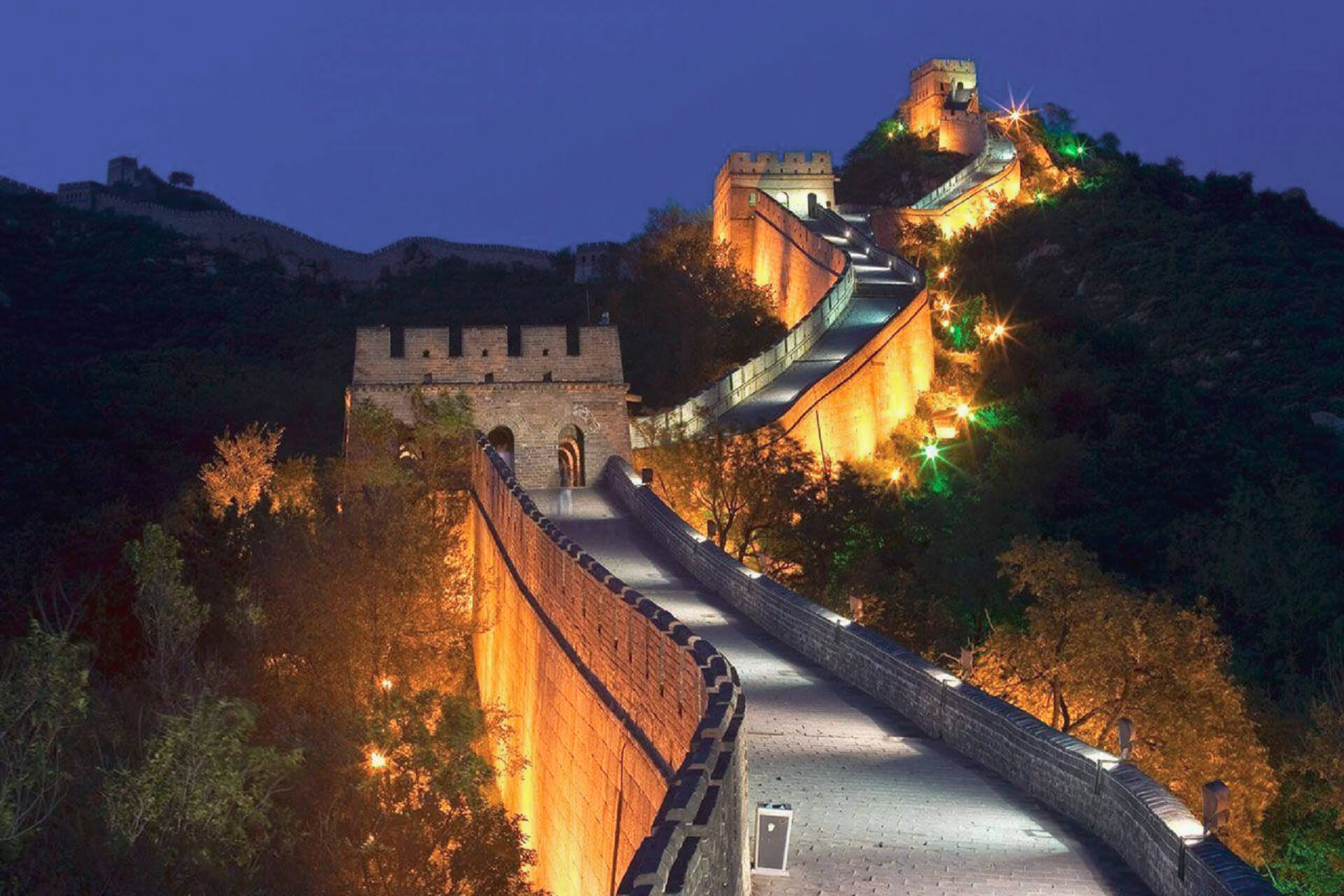
The Great Wall of China is without a doubt one of the most awe-inspiring and iconic architectural marvels ever constructed by humanity. This massive construction, which spans over 13,000 miles over China’s immense landscape, is a testament to the brilliance and determination of past civilizations. Let us begin on an adventure to discover the magnificence and historical significance of this amazing structure.
The Great Wall of China, also known as the “Long Wall” (長城) by the Chinese, is a network of fortifications built to safeguard Chinese states and empires from invasions and incursions by numerous nomadic groups. The wall was built around 2,000 years ago during the Warring States period and was continued by various dynasties until the Ming Dynasty (1368-1644 AD). The wall’s principal function was not just military defense, but also as a sophisticated transportation route and emblem of Chinese civilization unification.
This massive stronghold is composed of an intriguing mix of materials including soil, wood, bricks, and stones. It was originally built of tamped dirt, but as time progressed, bricks and stones became the primary building materials, especially during the Ming Dynasty. In different places, the wall varies in height, width, and design to accommodate the diverse geographical elements and strategic needs.
The watchtowers that dot the Great Wall’s vast length are one of its most intriguing characteristics. These strategically placed watchtowers acted as observation posts, signaling stations, and communication hubs. They enabled defenders to keep a close eye on possible threats and coordinate reactions over long distances. Some of these watchtowers are remarkably well-preserved, offering a look into the old building techniques used by skilled craftsmen of the time.
The Great Wall is steeped in historical tales and folklore aside from its military role. It witnessed countless epic battles, conquests, and dynastic rises and falls. The Wall functioned as a cultural and economic conduit, facilitating trade and idea interchange across the regions it protected. Furthermore, it aided in border control, immigration, and emigration, influencing ancient China’s demographics.
The Great Wall, as an ancient relic of outstanding cultural and historical significance, necessitates ongoing preservation and restoration operations. Natural erosion, human activity, and climatic conditions have all taken their toll on some parts of the wall throughout time. Fortunately, the Chinese government and other international groups have taken up the preservation mantle, investing significant resources to preserve and conserve this priceless treasure.
Perhaps more than anything else, the Great Wall of China represents the Chinese civilization’s tenacious spirit and collective might. It represents the hard work of numerous laborers, soldiers, and engineers who worked tirelessly to build this intimidating building. It stands tall as a symbol of unity, reminding us of the power of collective human endeavor and the rich history that connects us together.
The Great Wall of China is an incredible tribute to ancient China’s engineering prowess and rich heritage. This magnificent monument not only protected the region from invaders, but it also promoted cultural interaction and economic progress. Because of its watchtowers, grandeur, and historical significance, it has become an enduring symbol of human creativity and solidarity. The Great Wall of China continues to captivate and inspire people all over the world, inviting visitors from all over the world to marvel at its majesty and ponder on the incredible legacy of our shared human past.
Moai, Easter Island
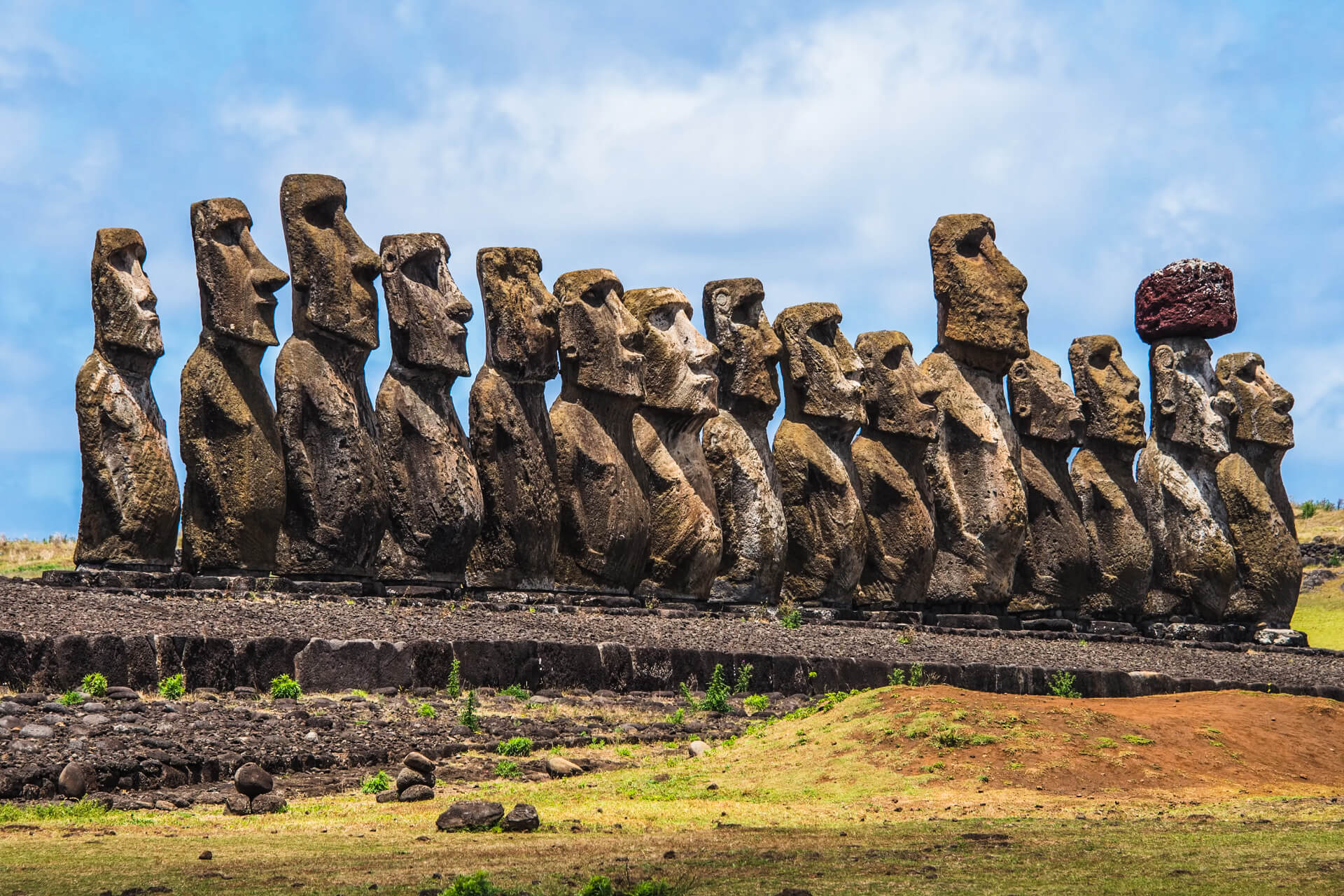
Easter Island is a lonely and mysterious island located in the huge Pacific Ocean. Locals refer to this tiny strip of land as Rapa Nui, and it is home to one of the most enigmatic and intriguing constructions in human history: the Moai.
For generations, the Moai, Easter Island’s towering stone guardians, have captivated explorers, archaeologists, and dreamers alike. These massive statues stand quietly throughout the island’s terrain, each one a stoic sentinel, silently telling the secrets of a long-lost civilization.
Easter Island, located around 3,700 kilometers off the coast of Chile, is a mystery in and of itself. How did the ancient people get to this remote location? What compelled them to create such great works of art? The questions linger, leaving us with just snippets of a story that has yet to be told.
The Moai itself are evidence of the islanders’ exceptional workmanship and engineering abilities. Each statue, carved from compressed volcanic ash known as tuff, represents a deceased ancestor, imbuing the Moai with mystical meaning.
The Moai range in height from 4 feet to an incredible 33 feet. These monolithic marvels were painstakingly carved with stone tools, showcasing the Rapa Nui people’s passion and craftsmanship. It’s mind-boggling to consider the work involved in creating these huge figurines, let alone the mysteries surrounding their transportation and placement.
According to legend, the Moai traveled to their allocated ahus, or ceremonial platforms, using a technique known as “walking” – an intriguing concept that conjures up visions of ancient stone giants ambling over the island. Recent study, however, reveals that these sculptures were moved utilizing a clever combination of tactics, including ropes, sledges, and a rocking motion. The work and creativity expended in moving these enormous stones demonstrates the Rapa Nui people’s resourcefulness.
The Moai are extremely important in Rapa Nui culture. These magnificent monuments were crucial to the islanders’ belief system, connecting the living to their forefathers and the supernatural realm. Each statue has its own atmosphere, with facial features that express authority and knowledge.
Historians and archaeologists continue to argue the Rapa Nui civilization’s collapse. Theories range from resource scarcity caused by deforestation to societal conflicts. Whatever the reason, the abandonment of statue carving and the island’s population fall just added to the mystery that is Easter Island.
Today, the globe is captivated by these silent sentinels. Tourism has renewed interest in the island, but it also presents a challenge to maintaining the delicate balance between exploration and conservation. Local governments and international organizations work together to safeguard and study these historic treasures so that future generations can see and enjoy them.
We are reminded of the fragility of human existence and the importance of maintaining our legacy as we gaze at the enigmatic faces of the Moai. These historic structures serve as a constant reminder of our past’s creativity, resourcefulness, and secrets. The charm of Easter Island’s Moai draws the curious traveler in, enticing us to immerse oneself in the mystery and enchantment that surrounds this secluded paradise.
The Easter Island Moai are a tribute to an ancient civilization’s tenacity and artistry. With their incomprehensible gazes and silent wisdom, these beautiful monuments remind us of the richness and complexity of human history.
Petra, Jordan
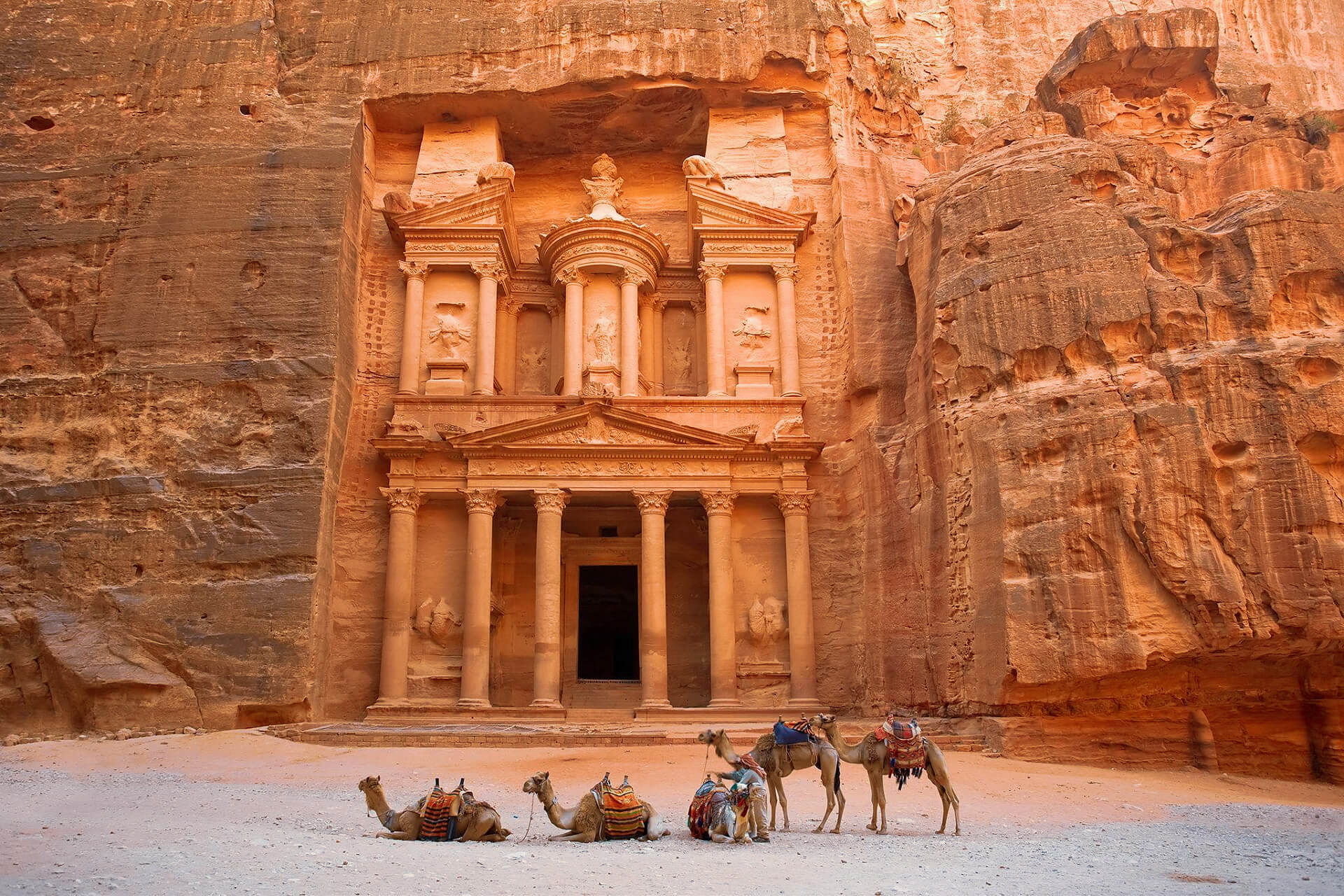
Nestled in the rugged terrains of southwestern Jordan sits an ancient treasure, a city carved into rose-red cliffs that has captivated the imaginations of travelers and history buffs alike. Petra, commonly known as the “Rose City,” is an archaeological marvel that demonstrates the ancient Nabateans’ creativity and majesty. Petra, with its magnificent architecture and rich history, has justifiably earned its place as one of the world’s oldest and most spectacular sites.
Petra, Jordan, a UNESCO World Heritage site since 1985, has captivated and awed visitors for years. Over two millennia ago, the Nabateans, an Arabian culture, methodically constructed this spectacular metropolis from the sandstone cliffs. Their innovative engineering, which combined natural rock formations with human workmanship, has kept this ancient wonder alive for generations.
The Siq, a tiny, twisting ravine that leads into the heart of the ancient city, greets travelers as they approach Petra. The Siq, with its 600-foot-high towering walls, creates an awe-inspiring voyage through time. The dance of light and shadow on the rose-red cliffs as the sun’s rays filter through the Siq adds to the enchantment.
When tourists emerge from the Siq, they are greeted by an iconic scene that has graced numerous travel magazines and inspired many travelers: the Treasury (Al-Khazneh). This stunning front, with its exquisite carvings and intimidating construction, was thought to be a mausoleum at first. Historians currently believe it was used as a temple or a royal burial. Nonetheless, the Treasury’s appeal remains apparent, leaving visitors in awe of the brilliance and ability of the ancient architects.
Beyond the Treasury is the expanse of Petra’s Lost City, a sprawling archaeological complex with a variety of monuments, tombs, and ancient houses. Every street corner tells a story about the city’s former magnificence and the lives of its people. The Street of Facades, which is lined with tombs carved into the rock faces, serves as a melancholy reminder of Petra’s rich history. Meanwhile, the Nabateans’ expertise of art and architecture can be seen in the Royal Tombs, which are carved with precision and embellished with classical adornment.
A challenging but rewarding trek brings visitors to yet another enthralling site, the Monastery (Ad Deir). This massive edifice, designed in the form of the Treasury, stands 148 feet tall. The Monastery’s majesty is enhanced by the stunning views of the surrounding landscapes that it affords, carved into the rock face at the peak of a mountain.
Petra’s achievement in becoming a wealthy city was primarily owing to its strategic location along historic trade routes. Because of the city’s location, the Nabateans were able to regulate the movement of products, which contributed to their economic prosperity. Petra, as a cultural melting pot, became a cosmopolitan city, accepting influences from Egypt, Greece, and Rome.
Petra has experienced several problems throughout history, including earthquakes, erosion, and human impact. Conservationists are working hard to save this ancient wonder for future generations, thus attempts to preserve and protect it are ongoing.
Petra, Jordan, is a timeless example of human ingenuity, innovation, and endurance. Its spectacular architectural marvels, skillfully carved into rose-red cliffs, continue to attract and inspire visitors from all over the world.

